Hi Everyone,
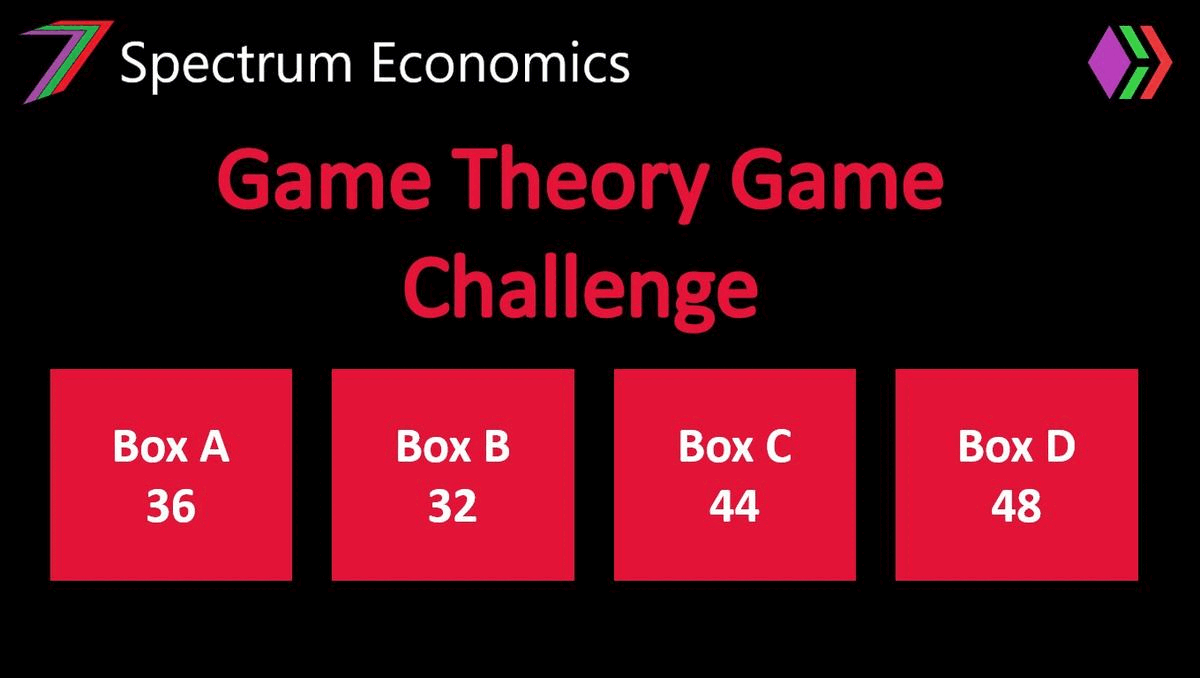
Welcome to the Economics Challenge Series for 2023. For the months of July and August, I am running an economics challenge series. The series consists of seven challenges. All seven challenges will commence in July and the results will be published and announced in August. Four of the seven challenges are returning from last year’s Challenge Series. Two are from the monthly contest series and one challenge is completely new. Below are the list of challenges.
- Challenge 1: Buying and Selling Game
- Challenge 2: Pick-a-Door
- Challenge 3: Complements and Substitutes
- Challenge 4: Buying and Selling Game (Business Version)
- Challenge 5: Ice Cream Game
- Challenge 6: Game Theory Game
- Challenge 7: Even-to-Win
Each challenge could reward winners with as much as 60 Hive Power. The value of the prize will depend on the level of participation. For each new participant, the prize will increase by 5 Hive Power. This will continue until 60 Hive Power is reached (12 participants). The first 12 participants will also receive a 50% upvote from this account. In addition to the prize money, the top few participants will be given points. These points will be used to determine the overall challenge series winner. This winner may receive as much as 80 Hive Power. The value of the prize will equal the sum of the number of participants across all challenges. This will continue until 80 Hive Power is reached.
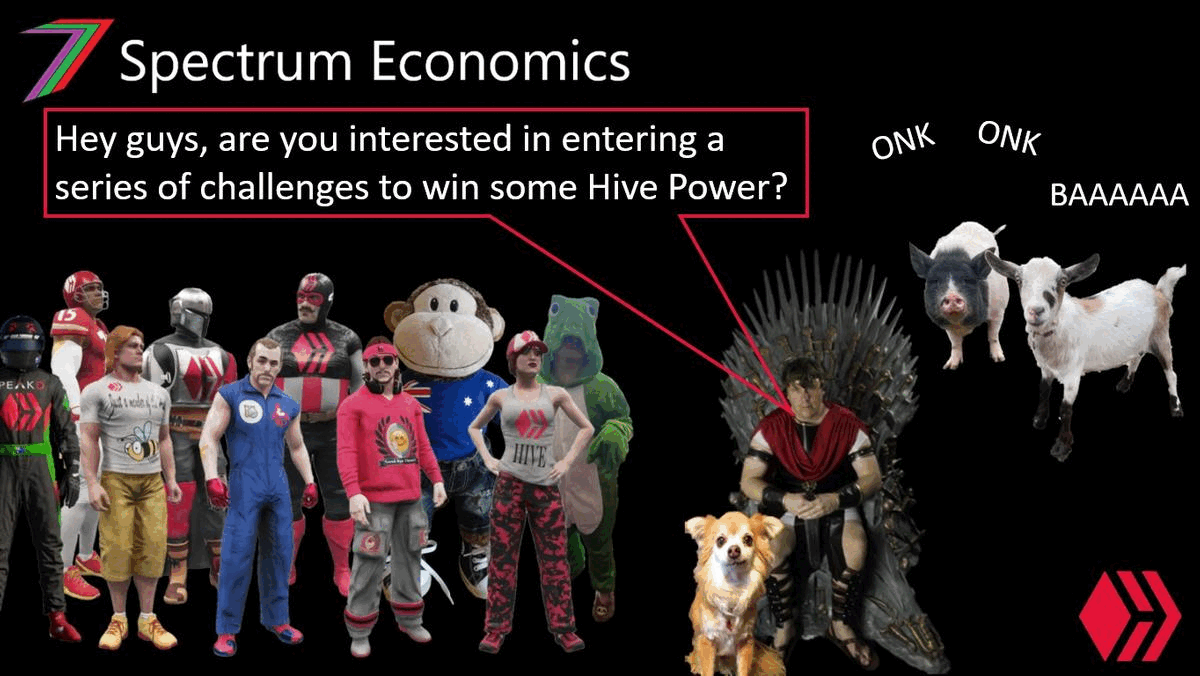
For more information on the challenge series and the upcoming challenges, I recommend that you read my post Economics Challenge Series 2023 (Coming Soon).
Welcome to Game Theory (Most or Least) Challenge
How to play?
The Game Theory (Most or Least) challenge requires participants to select 6 of 11 boxes. Each box has a monetary value; these values will be revealed later in this question. The value represented by each box will be shared equally across all participants who have selected that box. For example, if a box has a value of 80 and 10 participants have selected that box, each participant will be awarded a value of 8 (80/10).
All the information you need to know to play the game is provided in the question.
All entries must be made in the comments section of this post.
Each account is only permitted one entry.
Objectives of the game
This game has several different win conditions. These win conditions depend on values obtained by participants.
- The participant who obtains the highest value wins the challenge if no other players’ obtain that same value.
- If more than one participant shares the highest value, the participant with the lowest value wins if no other players’ obtain that same value.
- If more than one participant shares the highest value and if more than one participant shares the lowest value, the first and second participant to enter the challenge will be joint winners of the challenge and will share the prize evenly. This will occur regardless of the value they obtained from the boxes.
Below is an example of a game where participants choose 3 of 5 boxes. The Gif demonstrates how the game changes as more participants enter. In the example, Participant 2 is the winner. However, at different points in the game, there are different participants winning. For example, after Participant 3 entered, Participant 3 was winning. Watch the Gif to see how the game changes as more players enter.
Example of Game Theory Challenge
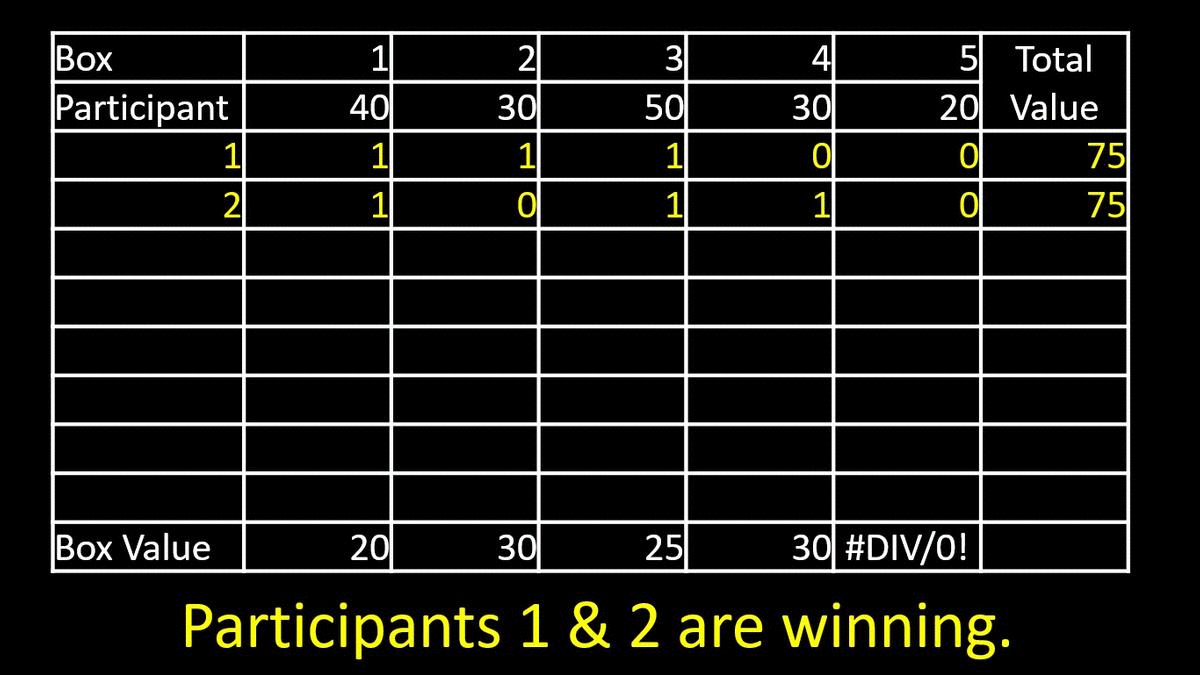
Participants’ value is calculated as follows (using an example of selecting 6 out of 11 boxes):
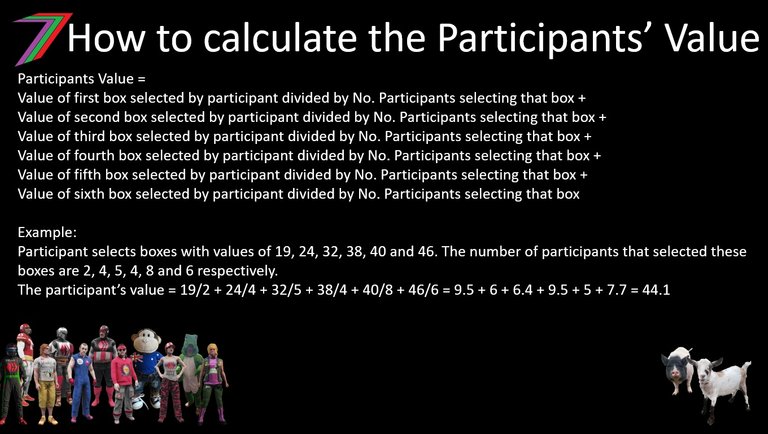
Logic of the objectives
The challenge tests participants’ ability to outmanoeuvre each other. The challenge contains both strategy and tactics. Entering early (first or second) provides the advantage of entering under a potential win condition. Entering later provides the advantage of being able to observe other participants decisions; therefore, potentially creating opportunities to achieve the highest or lowest value. However, if another participant enters, some of this advantage is lost.
Challenge Prizes
The total prize for this challenge could reach as high as 60 Hive Power. The number of participants determines the value of the prize. For every entry, the prize is increased by 5 Hive Power until a value of 60 Hive Power is reached. For this challenge, the total value of the prize goes to the winner. The first 12 entries will be given upvotes. The winner of this challenge will also be given 30 points. These points will be tallied at the end of the challenge series to determine the overall winner.
Let the challenge begin
Participants are required to select 6 of 11 boxes. Each box has been allocated a value. The value of the eleven boxes are as follows:
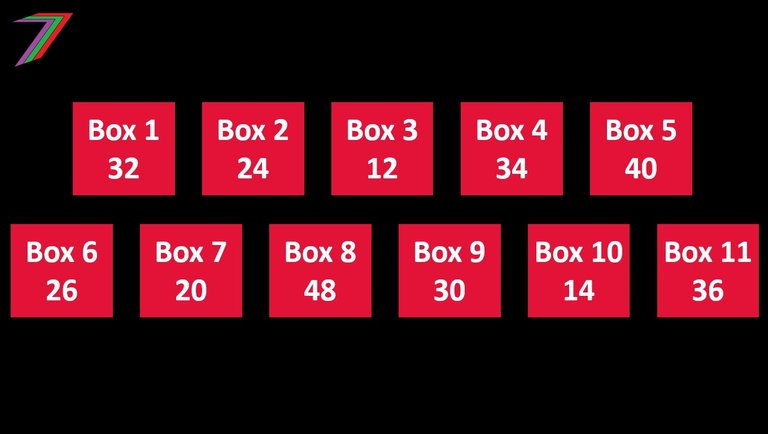
Box 1: 32, Box 2: 24, Box 3: 12, Box 4: 34, Box 5: 40, Box 6: 26, Box 7: 20, Box 8: 48, Box 9: 30, Box 10: 14, and Box 11: 36
Entry format
For this challenge, I expect to see entries made in the following format:
Boxes: …, …, …, and …
Example of entry
Boxes: 1, 4, 7, 8, 9 and 11
The closing date and time for this challenge is 6PM coordinated universal time (UTC) 30/07/2023. Responses after this time will not be accepted. The results of the challenge will be announced in a separate post.
I hope everyone has fun and enjoys this sixth challenge. If you have any questions, feel free to ask in the comments section. I look forward to your participation in the final challenge. It will be available in a few days.
More posts

I have several collection of posts. I have organised these collections based on content and purpose.
The first collection contains six collection posts created before PeakD had the collection feature. Four of these posts relate to the core of my content, one of them contains all my Actifit Posts, and one of the them contains my video course ‘Economics is for Everyone’.

The second collection consists of the posts that I consider define my channel. These posts are significant in terms of content as well as how they contribute to the growth of the channel. These posts reveal the most about what I believe in.

The third and fourth collections are what I call my ‘Freedom-base Economics living book’. They contain all the posts that support my ideas about the value and power of freedom. Some of these posts explain what we can achieve with freedom and what we need to do to utilise it. Some of them explain how we are deprived of freedom and how we often give up freedom for security and comfort. The third collection concludes with possible scenarios depending on what we (society) choose to do.


Hive: Future of Social Media

Spectrumecons on the Hive blockchain

